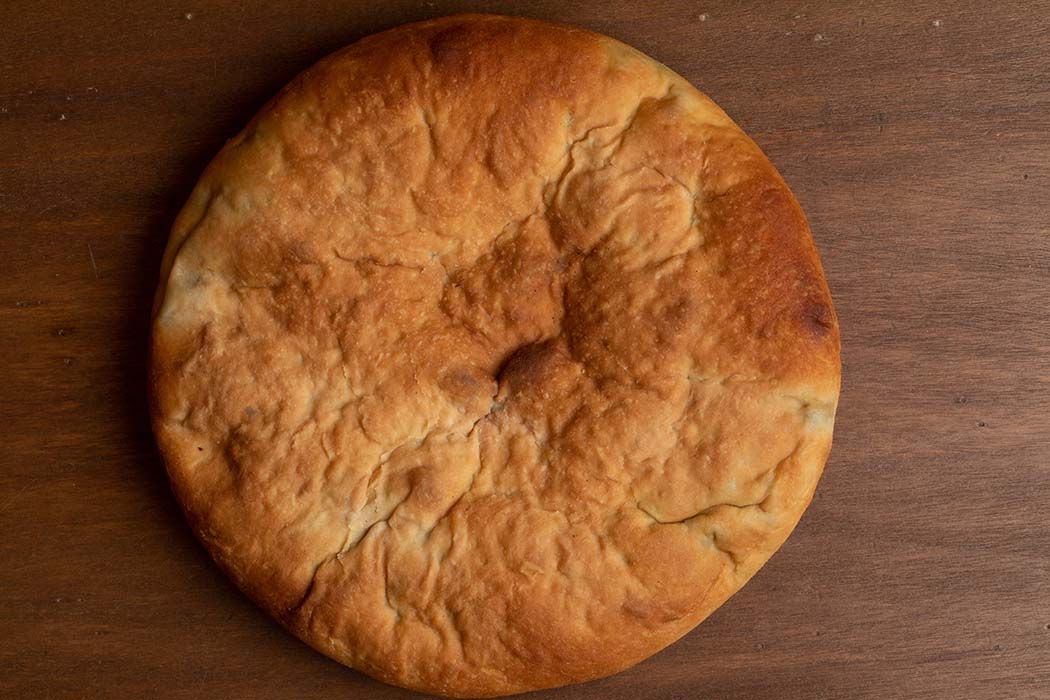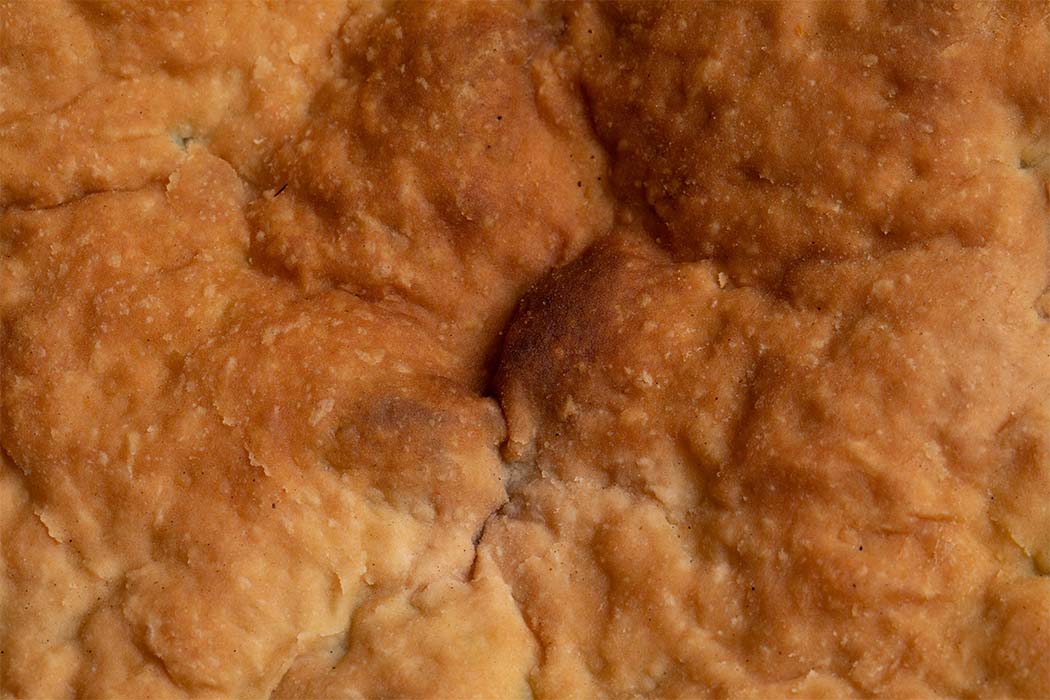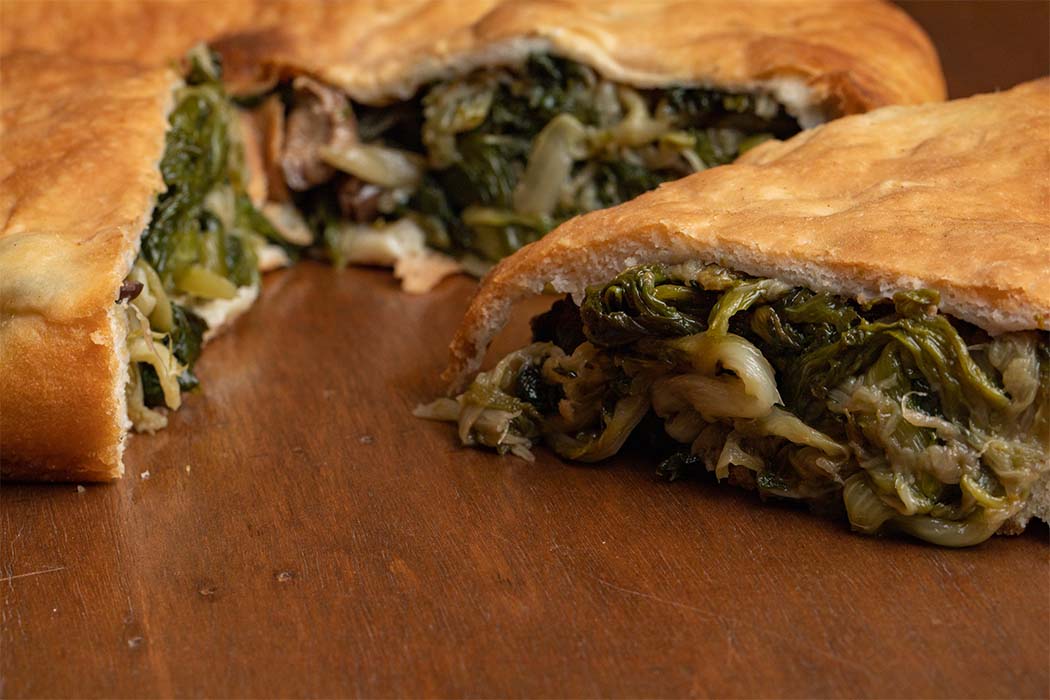


For the dough:
7 g dry yeast (1 tablespoon)
125 ml lukewarm water
600 g Italian type 00 flour or strong bread flour – more if/as needed; plus, several handfuls for kneading
1 teaspoon salt
250 ml room temperature water, more if and as needed
For the filling:
1-2 large escarole or broccoli rabe, coarsely chopped or cut into 1/2-2/3-inch lengths – leaves, stems and tops
2 tablespoons extra virgin olive oil
3 cloves garlic, chopped
1-2 tsp capers, desalted
25 fat black oil cured olives, pitted and cut into halves or left in large pieces
1-3 salt-cured anchovies (optional)
pinch of salt (if not using anchovies)
1 tbsp pine-nuts (optional)
1 tbsp sultanas, soaked (optional)
To assemble:
dough (above)
2 tablespoons extra virgin olive oil
escarole or broccoli rabe filling (above)
coarse salt, to taste
For the dough:
Mix the yeast with the lukewarm water in a bowl and leave in a warm place for about 10 minutes, you want a foam to appear, some sign that the yeast is alive and working its miracles. On the other hand, many dried yeasts do not need to be proofed; read the label. If so, then just add the yeast to the dried mixture.
Place the flour (or flour and dried yeast) in a bowl with the salt and make a well; pour either the yeast water (if you are proofing) or the lukewarm water without the yeast, and begin to mix the water with the flour. Add 250 ml of room temperature water and mix it all together with a wooden spoon. When it begins to form a soft dough, use your hands, sprinkling lightly with the flour, kneading for about 10 minutes, or until soft and elastic.
Return the dough to the bowl, sprinkle with flour on top and bottom, cover with a clean cloth or plastic wrap and leave in a warm spot to raise, until doubled. This could take up to an hour and a half; times will vary according to the weather.
Punch the dough down; if you wish to use it later in the day, place in a plastic bag and stick in fridge for a slow rise until needed. If you wish to use it another time completely, freeze. If you wish to use it immediately, continue with recipe.
For the escarole or broccoli rabe filling:
Bring a saucepan of water to a boil then add the escarole; cook for 8-10 minutes or until tender; drain.
Gently heat the extra virgin olive oil and garlic together in a frying pan over medium low heat; when garlic turns golden and begins to softly sizzle, add the drained greens, and all the other ingredients of the filling, toss together and cook for a minute or two, then remove from the heat and cool.
To assemble:
Working on a large flat surface or on two flat baking sheets such as biscuit sheets next to each other, work the dough flat, drizzling it with 1 1/2 tablespoons of the extra virgin olive oil as you do so.
Spread the ricotta evenly on one surface of the dough, leaving a border of about 1-2 inches from edge; top with the escarole filling, then fold the dough over to enclose, turning the edges over to seal tightly.
Brush the remaining extra virgin olive oil over top, cut a few slits in the top of the dough, and sprinkle with the coarse salt.
Bake at 210-220°C until golden brownish, about 15-20 minutes.
Remove from oven and eat hot, or at cool room temperature.
Instead of escarole, prepare the pizza with broccoli di rabe, substituting it for the escarole in the recipe.
This lovely flat pie – pizza really means pie and refers to both savoury and sweet pies in addition to the iconic Neapolitan pizza. This focaccia-like stuffed bread is filled with braised bitter greens such as escarole or broccoli rabe, capers, pine nuts and fat fleshy black olives. You might add anchovies, you could also add sultanas. Serve in squares as an appetizer or in bigger squares or wedges with salad for lunch or supper. It is good fresh from the oven, but surprisingly, better still the next day eaten at room temperature; you often see them displayed in Naples in glass cases in front of caffe-bars, to have as a snack along with whatever you are drinking at the moment, perhaps a cooling glass of lemonade or a juice?


